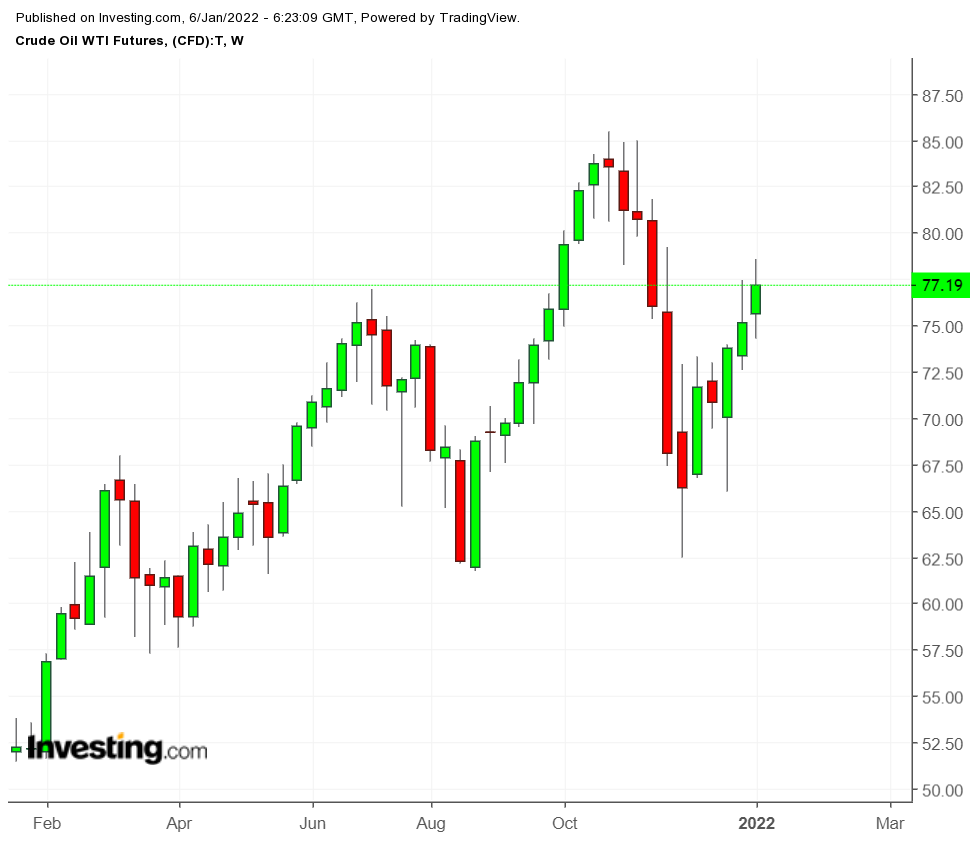At the end of December, the Federal Reserve Bank of Dallas released the results of its fourth quarter energy survey which included data collected between Dec. 8–16 from 90 exploration and production firms and 40 oil services firms.

Below are some insights from the survey and what they mean for the future of U.S. oil production and oil prices.
1. Production costs are skyrocketing
This was the third straight quarter in which the costs for production escalated. However, it is notable that the rate of increase in Q4 was the fastest in the five years the survey has been conducted.
Firms reported increases in costs across the board, including exploration and development, lease operating expenses and personnel. In fact, rising costs featured prominently in the comments section with executives expecting that difficulties producing supplies and inflation will impact drilling and well completion in 2022. Executives also mentioned labor shortages and difficulty finding qualified employees as a factor that will limit production.
Inflation is clearly playing a role in increased costs of oil production and these costs will likely be passed down to consumers. Even if expenses don’t continue to increase, they are likely to remain elevated and will help keep a floor on oil prices. It is also likely that increased costs will crimp production growth in 2022.
2. Price forecasts are modestly higher
132 executives provided their WTI price forecast for the end of 2022. The average price forecast was $74.69 per barrel. 74% of respondents think that WTI prices will be in the $70 to $85 range by the end of 2022.
However, firms report that when planning capital expenditures for 2022, they based their plans on an average WTI price of just $64 per barrel. These price forecasts are less optimistic than many of the major banks, like Goldman Sachs, Citibank, and Morgan Stanley, which forecast prices rising to the $80 and $90 range in 2022.
It is important to understand these price forecasts within their proper context. Recently, the trend has been for banks to over-estimate oil prices while U.S. oil firms have tended to under-estimate them. For example, respondents to the Q3 survey, (conducted Sept. 15–23, 2021 when the spot price was around $72 per barrel), put the average price for WTI at the end of 2021 at $69.99 per barrel.
In fact, the price of WTI on Dec. 30, 2021 ended up being $76.99 per barrel. On the other hand, in October, many of the big banks believed the price of Brent would hit $90 per barrel in December 2021. Obviously, it did not, and those banks were too optimistic.
Oil firms, especially those in the U.S., may tend to under-estimate future prices because their most recent experience has been one of extremely low pricing. Many firms were traumatized by the long period of depressed prices that began in 2015 and were especially affected by the total collapse of WTI in the spring of 2020.
As a result, firms are likely being extra conservative and under-investing in capital expenditures considering where oil prices are likely to fall in 2022.
3. Production growth a priority, especially for small firms
Despite rising costs, labor shortages, regulatory uncertainty and a lack of capital from financial institutions, nearly 50% of firms listed production growth as their top priority for 2022. However, this doesn’t mean that traders should necessarily expect to see major jumps in total U.S. production in 2022.
Smaller firms (defined by the survey as producing less than 10,000 bpd) overwhelmingly listed production growth as their main goal, whereas large firms (defined as producing over 10,000 bpd) were more likely to list reducing debt as their top priority for 2022. Because these firms are so small, even if they double their production capacity in 2022, the amount is unlikely to make a significant impact in the larger picture of U.S. production in 2022.
